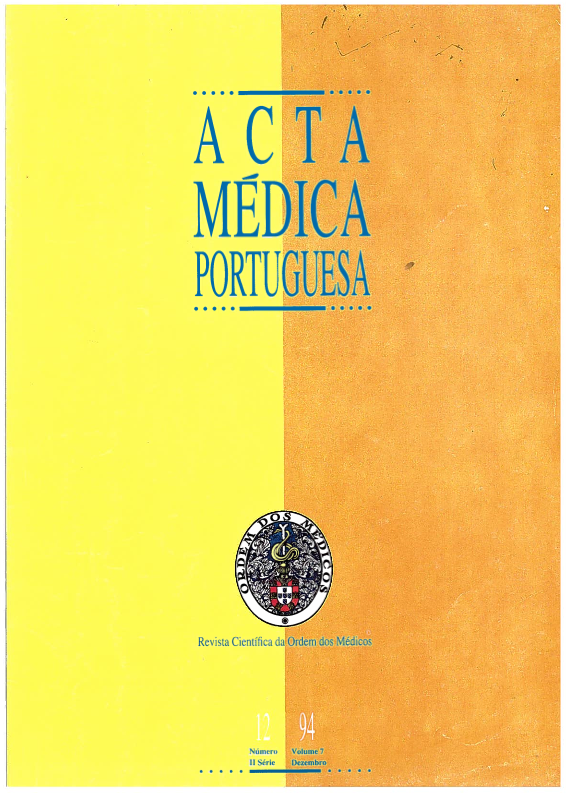Controle de qualidade da vagotomia na perfuração de úlcera duodenal.
DOI:
https://doi.org/10.20344/amp.3024Resumo
The efficacy of truncal vagotomy combined with pyloroplasty has been studied in 56 patients, divided into the following groups: Group I-29 patients submitted to bilateral truncal vagotomy (BTV) and pyloroplasty, as the method of treatment to solve the problem of perforated duodenal ulcer (initial and retrospective phase of study). Group II-With 11 patients, who underwent the same operation as those in Group I but with the surgeon's knowledge of the results of phase I and also awareness of the laboratory control of its surgery (prospective phase). Group III-A control Group of 16 patients, with chronic duodenal ulcer submitted to a routine proximal gastric vagotomy (superselective or hyperselective vagotomy). All of the patients were clinically evaluated and all of them have done acid secretion studies (Kay and Sham-Feeding test). Basal acid output (BAO), maximum acid output after Sham-Feeding (PAOsf), and pentagastrine (PAOpg), were determined in order to control the efficacy of vagotomy. In group III, results were compared with those obtained pre-operatively. In Group I, 48.27% of patients had a PAOsf higher than 4 mEq/hour-value which has been considered the maximum level of normality after complete BTV without gastric resection. In Group II, the number of patients with incomplete vagotomy decrease to 18.18%. In Group III, all the patients had a PAOsf lower than 4 mEq/hour and 83.81% of acidity reduction after Sham-Feeding test, in comparision with the pre-operative values.(ABSTRACT TRUNCATED AT 250 WORDS)Downloads
Downloads
Como Citar
Edição
Secção
Licença
Todos os artigos publicados na AMP são de acesso aberto e cumprem os requisitos das agências de financiamento ou instituições académicas. Relativamente à utilização por terceiros a AMP rege-se pelos termos da licença Creative Commons ‘Atribuição – Uso Não-Comercial – (CC-BY-NC)’.
É da responsabilidade do autor obter permissão para reproduzir figuras, tabelas, etc., de outras publicações. Após a aceitação de um artigo, os autores serão convidados a preencher uma “Declaração de Responsabilidade Autoral e Partilha de Direitos de Autor “(http://www.actamedicaportuguesa.com/info/AMP-NormasPublicacao.pdf) e a “Declaração de Potenciais Conflitos de Interesse” (http://www.icmje.org/conflicts-of-interest) do ICMJE. Será enviado um e-mail ao autor correspondente, confirmando a receção do manuscrito.
Após a publicação, os autores ficam autorizados a disponibilizar os seus artigos em repositórios das suas instituições de origem, desde que mencionem sempre onde foram publicados e de acordo com a licença Creative Commons









